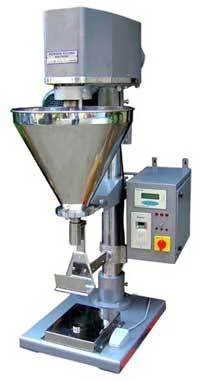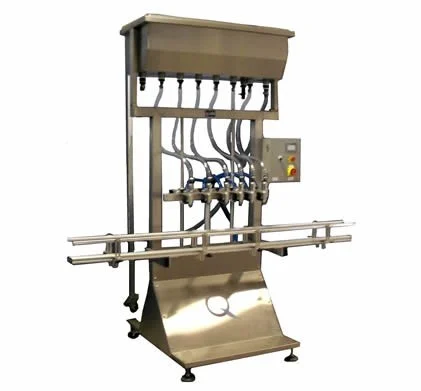

In the packaging industry, different methods of filling are employed in the packaging line based on the product and container type. Gravity filling and auger filling are two such methods.
USE CASES
Gravity filling, often employed in the beverage and pharmaceutical sectors, is used to fill containers with liquid products.
Auger filling is commonly used in industries that deal with powders, granules, and other dry or semi-dry materials.
PROCESS BREAKDOWN
The method of gravity filling relies on the force of gravity to fill the containers without the need for additional pressure or mechanical systems.
The liquid product is stored in a reservoir at an elevated height above the containers to be filled. The containers are positioned below the reservoir, and the filling process is initiated by opening a valve or a nozzle. Due to the force of gravity, the liquid flows from the elevated reservoir into the containers.
Auger filling involves the use of an auger, which is a helical-shaped screw, to dispense the product into containers.
The auger filling process can be divided into three steps – product dispensing, metering and filling. The dry or semi-dry material is stored in a hopper or reservoir above the filling machine. The auger, located at the bottom of the hopper, rotates to draw the product from the hopper and carry it towards the discharge point. As the auger rotates, it advances the product forward while also metering the amount of material being dispensed. The pitch and speed of the auger can be adjusted to control the volume or weight of the product dispensed. As the auger rotates, the material is transferred into the containers through a nozzle or tube.
ADVANTAGES
Gravity filling is a relatively simple and cost-effective method compared to more complex filling systems. It is suitable for a wide range of liquid products, including water, juices, soft drinks, oils, and pharmaceutical solutions. Gravity filling also tends to be gentle on the product, minimizing foaming or agitation during the filling process.
Auger filling machines can handle a wide range of products, including powders, granules, spices, coffee, chemicals, and more. The auger design and configuration can be adjusted based on the specific characteristics of the product being filled. Auger fillers are also known for their high precision and accuracy in dosing and filling. The speed and rotation of the auger can be precisely controlled to achieve consistent fill weights or volumes.
DISADVANTAGES
Gravity filling may not be suitable for certain types of products or containers. For example, highly viscous liquids or products with particulate matter may require specialized filling techniques. Additionally, containers with narrow openings or those that need precise filling levels may require more precise and controlled filling methods, such as pressure or volumetric filling systems.
Auger filling may not be suitable for all types of products. Materials that are extremely fine, abrasive, or prone to compacting may require specialized auger designs or alternative filling methods.






